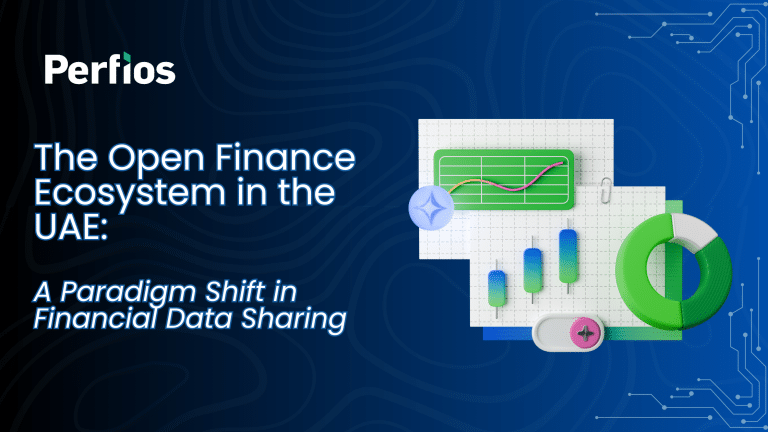In today’s digital era, the menace of ID tampering and fraud has escalated, posing a significant threat to global economic stability and personal security. A 2023 report from the Global Identity and Fraud Report by Experian highlighted a stark reality: nearly two-thirds of businesses worldwide experienced the same or more fraud losses compared to the previous year, with identity theft being a critical component. Furthermore, the Federal Trade Commission (FTC) in the United States received over 1.4 million reports of identity theft in 2022 alone, underscoring the pervasive nature of this issue.
The rise in digital transactions has paralleled an increase in sophisticated fraud techniques, making it imperative to understand the scope and scale of ID tampering and fraud on a global scale. As economies continue to intertwine and digital platforms dominate financial transactions, the urgency for robust, innovative solutions to combat identity-related crimes has never been more acute. This introductory glimpse into the world of ID tampering sets the stage for a deeper dive into its global landscape, emphasizing the critical role of technology in mitigating these risks.
Understanding ID Tampering and Fraud
ID tampering and fraud encompass a broad spectrum of illicit activities aimed at manipulating or forging identification documents and digital credentials to commit financial theft, access unauthorized services, or evade law enforcement. According to the Identity Theft Resource Center’s 2023 report, there was a 20% increase in identity fraud cases globally, signaling a growing trend that leverages both traditional and digital methods. This encompasses everything from the physical alteration of government-issued IDs to sophisticated cyber schemes that pilfer personal data online.
The World Economic Forum (WEF) in 2023 flagged identity theft as one of the top global risks, with digital ID fraud in particular being highlighted due to the rapid digitization of financial services. Additionally, a study by Javelin Strategy & Research in 2022 found that digital identity fraud alone cost consumers more than $28 billion worldwide. This introduction to ID tampering and fraud sheds light on its complexity and the multifaceted approaches criminals use, underlining the necessity for continuous innovation in fraud detection and prevention strategies.
The Global Incidence of ID Tampering
The global incidence of ID tampering presents a formidable challenge to both individuals and institutions worldwide. While exact numbers vary, the United Nations Office on Drugs and Crime (UNODC) has consistently highlighted the rising trend in identity-related crimes across continents. In Europe, the European Union Agency for Law Enforcement Cooperation (Europol) reported an alarming increase in ID fraud cases, attributing this rise to the growing sophistication of counterfeit documents.
Similarly, in Asia, the Association of Southeast Asian Nations (ASEAN) flagged identity theft as a critical area of concern, with millions affected annually. The Americas are not immune, with the United States Federal Bureau of Investigation (FBI) identifying identity theft as one of the fastest-growing crimes, affecting millions of Americans each year. These statistics underscore a universal vulnerability to ID tampering, emphasizing the need for global cooperation and advanced technological solutions to counteract this pervasive threat.
Trends and Techniques in ID Tampering
The landscape of ID tampering is ever-evolving, with fraudsters continually adapting to new security measures. A significant trend observed is the shift towards digital ID tampering, reflecting the increased online presence of personal and financial transactions. Cybersecurity firms have reported a spike in phishing attacks aimed at stealing personal information, which is then used in sophisticated ID fraud schemes. According to Cybersecurity Ventures, phishing attacks constitute over 90% of successful cyber breaches, underscoring their role in ID tampering efforts.

Another emerging trend is the use of deepfake technology to bypass biometric security measures. Deepfakes, which use AI to create realistic images or videos, have been employed to mimic individuals’ facial features or voice biometrics, complicating the verification processes. The AI Foundation’s 2023 report highlights a 300% increase in deepfake-related incidents over the past year, indicating a growing challenge for ID verification systems.
Moreover, the dark web continues to be a bustling marketplace for stolen identities and counterfeit documents. Blockchain analysis firm Chainalysis noted a 40% increase in transactions involving counterfeit documents on the dark web, illustrating the scale and sophistication of the trade in fraudulent IDs.
These trends highlight the dynamic nature of ID tampering and the importance of staying ahead with advanced, AI-driven security solutions capable of countering these sophisticated techniques.
The Impact of ID Tampering on Businesses and Consumers
The repercussions of ID tampering are vast and varied, striking both businesses and consumers with significant financial and emotional tolls. For businesses, the direct financial losses can be staggering. According to a report by the Association of Certified Fraud Examiners (ACFE) in 2023, companies worldwide lose an estimated 5% of their annual revenues to fraud, with ID tampering being a significant contributor. This not only includes immediate financial losses but also substantial costs associated with strengthening security measures post-breach.
The impact on consumers extends beyond the financial sphere. The Emotional Impact of Fraud report by the Consumer Financial Protection Bureau (CFPB) in 2023 found that victims of ID fraud suffer from long-lasting stress, anxiety, and a decline in trust towards financial institutions. This emotional distress is compounded by the time-consuming and often complex process of restoring one’s identity, which can take an average of 200 hours of personal time, according to the Identity Theft Resource Center.
Furthermore, ID tampering undermines consumer confidence in digital commerce. A survey by the National Cyber Security Alliance found that 70% of consumers are concerned about their data privacy, and 50% feel helpless about securing their online information, indicating a significant trust gap that businesses must address.
The ripple effects also include increased regulatory scrutiny and potential legal liabilities for businesses, pushing many to invest heavily in advanced fraud detection and prevention technologies. This environment underscores the critical need for continuous innovation in cybersecurity measures to protect against the evolving threat landscape of ID tampering.
Regulatory Responses to ID Tampering
In response to the escalating threat of ID tampering, governments and international bodies worldwide have ramped up regulatory measures to protect individuals and institutions. The European Union’s General Data Protection Regulation (GDPR), enacted in 2018, set a global benchmark for data protection, imposing stringent requirements on data handling and granting individuals greater control over their personal information. Violations of GDPR can result in fines up to 4% of annual global turnover or €20 million, whichever is greater, signaling the seriousness with which ID tampering is regarded.
Similarly, the United States has taken significant steps with the introduction of the Identity Theft and Assumption Deterrence Act, which classifies identity theft as a federal crime, alongside various state-level laws like California’s CCPA, providing robust consumer data protection rights.
In Asia, countries like Singapore have introduced the Personal Data Protection Act (PDPA), which includes heavy fines for data breaches, while India’s Personal Data Protection Bill promises to be a landmark in ID and data protection.
These regulatory responses reflect a global acknowledgment of the severe risks posed by ID tampering and fraud, emphasizing the need for stringent data protection laws, cross-border cooperation, and the implementation of advanced technological solutions to safeguard personal identity in the digital age.
The Role of Technology in Fighting ID Fraud
Technological advancements have become central to the fight against ID fraud, with businesses and regulators alike turning to innovative solutions to protect consumers and secure transactions. In this digital arms race, artificial intelligence (AI), machine learning (ML), blockchain, and biometric verification are leading the charge.
AI and ML algorithms are particularly effective, offering the ability to analyze vast datasets to detect patterns indicative of fraudulent activity. These technologies can adapt over time, learning from new fraud attempts to prevent future breaches. Biometric verification, using unique physical or behavioral characteristics such as fingerprints, facial recognition, and voice patterns, adds another layer of security, making unauthorized access increasingly difficult.
Perfios, a leader in financial technology solutions, has leveraged these technologies to develop its ID tampering API. This innovative tool helps businesses detect and prevent ID fraud by providing real-time verification of documents and biometric data. The API uses advanced algorithms to analyze document features, cross-referencing them with a vast database of authentic documents to identify discrepancies indicative of tampering. Furthermore, it incorporates biometric analysis to ensure that the person presenting the ID matches the document’s rightful owner, offering a dual layer of protection.
By integrating Perfios’s ID tampering API, businesses can significantly reduce the risk of fraud, protecting their customers and reputation. This technology is not only a deterrent against potential fraudsters but also positions companies as trustworthy and secure, which is increasingly important in today’s digital landscape.
Conclusion
The future of ID verification and fraud prevention is poised at an exciting juncture, with emerging technologies promising to redefine the landscape. Innovations in AI and machine learning are expected to lead the way, becoming more sophisticated in detecting and predicting fraudulent attempts before they occur. Gartner predicts that by 2025, AI-driven identity verification technologies will reduce identity fraud losses by up to 75% in organizations that adopt them.
Blockchain technology is another area set for significant impact. Its ability to provide secure, unalterable records makes it an ideal candidate for fraud-proof ID verification systems. Experts from the World Economic Forum estimate that by 2027, 10% of global GDP will be stored on blockchain technology, underscoring its potential to revolutionize identity management.
Quantum computing also holds promise for enhancing security measures. Although still in its infancy, quantum encryption techniques could eventually render current forms of cyber theft obsolete, offering a level of security that is virtually unbreakable.
In this evolving scenario, solutions like Perfios’s ID tampering API are expected to integrate these advancements, offering businesses more robust, real-time capabilities for combating ID fraud. By leveraging AI’s predictive analytics, blockchain’s secure record-keeping, and the potential of quantum computing, Perfios can provide a forward-looking, comprehensive approach to fraud prevention that is both adaptive and resilient.
The journey towards a fraud-free future is complex and challenging, yet the ongoing advancements in technology offer a beacon of hope. As we look ahead, the commitment to innovation and collaboration across industries will be pivotal in shaping a secure, trustworthy digital ecosystem for ID verification and fraud prevention.
About Perfios:
Perfios Software Solutions is India’s largest SaaS-based B2B fintech software company enabling 1000+ FIs to take informed decisions in real-time. Headquartered in mumbai, India, Perfios specializes in real-time credit decisioning, analytics, onboarding automation, due diligence, monitoring, litigation automation, and more.
Perfios’ core data platform has been built to aggregate and analyze both structured and unstructured data and provide vertical solutions combining both consented and public data for the BFSI space catering to their stringent Scale Performance, Security, and other SLA requirements.
You can write to us at connect@perfios.com
For more Such information contact us@ https://solutions.perfios.com/request-for-demo













